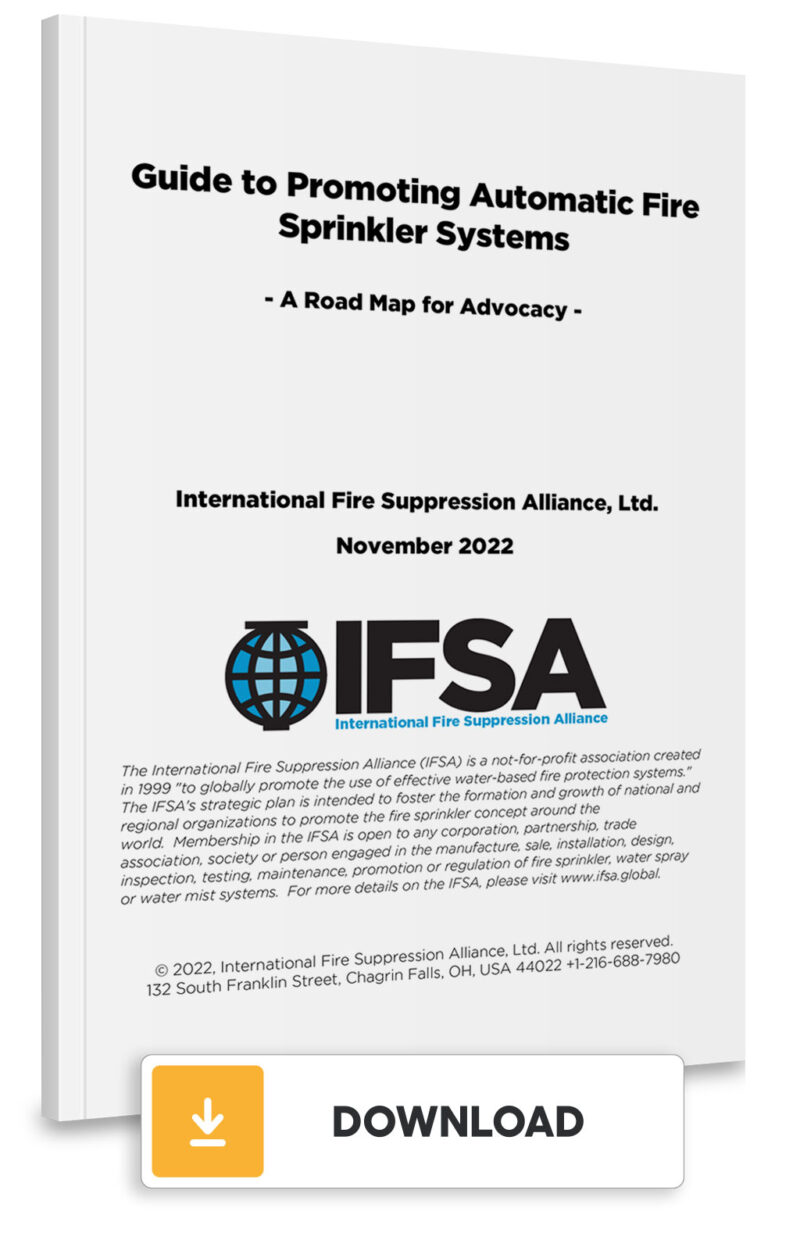Guide to Promoting Automatic Fire Sprinkler Systems: Limitations of Insurance Incentives for Sprinkler Systems

Enter your email to download the full Guide.
As part of the development process for the Guide to Promoting Automatic Fire Sprinkler Systems: A Road Map for Advocacy, the IFSA surveyed international fire sprinkler advocates about their experience, asking them to rank 10 common strategies aimed at increasing the use of automatic fire sprinkler systems.
One of the strategies they were asked to rank was “Encouraging property insurance discounts for sprinklers.” This strategy fell further down on their ranked list. The top strategy they identified as most effective was “Convincing code writers to require sprinkler systems for specific occupancies.” They ranked property insurance discounts much further down the list, ranking it six out of 10.
Insurance incentives were historically the main driver for the adoption of fire sprinkler systems, particularly during the first century of their use. While the fire sprinkler advocates ranked insurance incentives lower on the list, they remain a significant motivator in parts of the world lacking strong building regulations or mandates.
Fire Sprinklers and the Industrial Revolution
The property insurance industry’s recognition of the effectiveness of sprinklers dates back to the industrial revolution, with them establishing rate structures to incentivize property owners to protect their buildings. Even before sprinklers were widely available, insurers encouraged fire-safe construction practices, such as using noncombustible materials. A notable historical example is Lloyds of London halting fire insurance policies in Chicago in 1871 due to concerns about unsafe building practices—just one year before the Great Chicago Fire.
One of the earliest advocates for fire sprinklers was Zachariah Allen, a New England textile mill owner. After upgrading his mill with fire protection measures and being denied a premium reduction, Allen organized like-minded mill owners to create a mutual insurance company that insured only “good risks.” This initiative led to the formation of the Factory Mutual System—now FM Global—and established the concept of “highly protected risk” (HPR) properties, which prioritize sprinkler systems to reduce fire losses.
While premium reductions are generally greater for high-risk, high-value buildings, insurance alone does not cover all risks—such as life safety hazards or operational disruptions—and does not address liability risks in non-sprinklered buildings.
Support Insurance-Based Incentives
Because insurance-driven sprinkler installations are largerly private business decisions between property owners and insurers, advocacy groups typically don’t focus on this area. The most effective way to support insurance-based incentives is by ensuring sprinkler systems are correctly designed, installed and maintained. Certification of products and certifying the proficiency of the people involved in system design and installation are topics further discussed in Section 4.4 of the Guide.
To read the complete content of chapter three, download the full Guide.
Watch for the next blog post in this series about the Guide to Promoting Automatic Fire Sprinkler Systems: A Road Map for Advocacy. It highlights contents of chapter four, “Fire Codes and Fire Sprinklers.”
